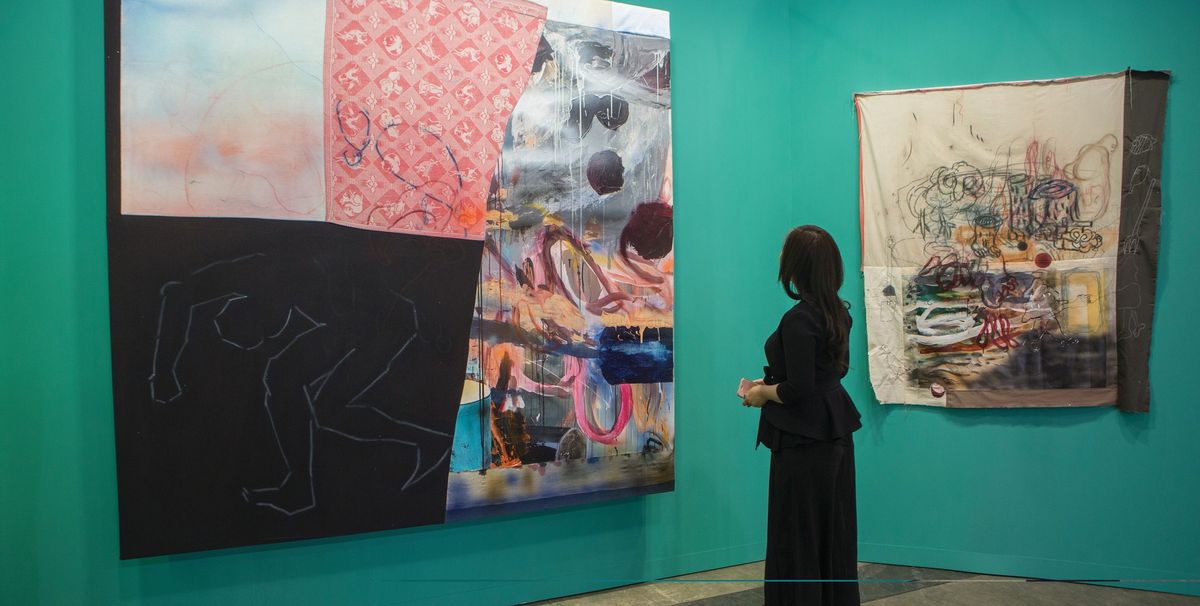The Asian art market is often portrayed as a high-octane affair, driven by a handful of billionaires making big-ticket purchases, usually at auction. But most dealers at Art Basel in Hong Kong this year are firmly focused on the middle market, with the vast majority of works priced well under $500,000.
The aim, dealers say, is to appeal to a range of audiences and budgets in a market that is still emerging. Billionaires are being created in Asia at a rate of one every three days, but it is the affluent “upper middle” classes that will become the largest segment of the population by 2022, according to Clare McAndrew’s first art market report for Art Basel. “The upper middle classes are critical for the gallery sector and for the market,” says McAndrew, who defines the mid-range as $50,000 to $1m.
Despite the current squeeze on the middle market and a struggling Chinese economy, the strategy of bringing mid-tier works is paying off at the fair. But several dealers we spoke to (who wish to remain anonymous) say that Beijing’s recent tightening of capital controls could affect sales to mainland China.
The Shanghai-based dealer Leo Xu sold several pieces, priced between $7,500 and $40,000, during the VIP opening. “Initial worries have been put to rest,” Xu says. He says that there are around 30 high-profile collectors of contemporary art in Asia, but that the young, professional middle-class Chinese are “increasingly saving up to buy works of art rather than spending their money on luxury goods”.
Blue-chip galleries such as David Zwirner, Pace and Hauser & Wirth also reported brisk sales in the mid-range. Pace sold two canvases from 2016 by the Chinese artist Qiu Xiaofei, priced between $50,000 and $150,000, on Tuesday. “The sale of a $10m painting might be headline grabbing, but in the middle market you build long-term relationships with collectors,” says Marc Glimcher, the president of Pace, which is opening a second, larger space in Hong Kong later this year.
Most of Hauser & Wirth’s sales were to Asian collectors. They included a Phyllida Barlow sculpture, which sold to a Chinese museum for £150,000, and a ceramic work by Rashid Johnson, which went to a Chinese collector for $175,000.
Sales at David Zwirner, which is due to open a branch in Hong Kong early next year, were largely for under $500,000. Among them were a print by Jordan Wolfson, which sold to a Japanese collector for $95,000, and a 2016 vivid green Infinity Net painting by Yayoi Kusama, for $450,000. At the top end, two new portraits by Luc Tuymans sold for $1.5m each.
Nonetheless, the fair is not without blue-chip names such as Gerhard Richter, Roy Lichtenstein and Andy Warhol. Brett Gorvy, the co-owner of Lévy Gorvy gallery, which is showing works priced from $200,000 to more than $10m, says most art-fair purchases are for less than $1m.
Some galleries say they plan to rehang their stands with more mid-range works after the two VIP opening days. At Massimo De Carlo, paintings priced around €500,000 are likely to be replaced by works by Diego Perrone (€15,000-€40,000), according to the gallery’s associate director Laura Ravelli. “We are seeing more international collectors than in previous years, particularly from Korea and the US,” says Ludovica Barbieri, the director of Massimo De Carlo.
The Hong Kong-based collector Alan Lo says the economic and political climate is causing people to “think twice before buying”, but that Art Basel in Hong Kong is “inspiring a new generation of collectors”.


